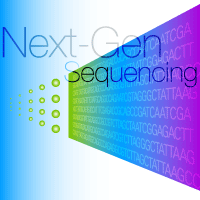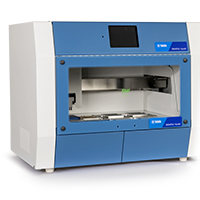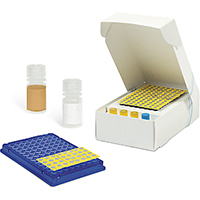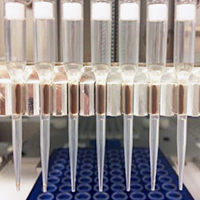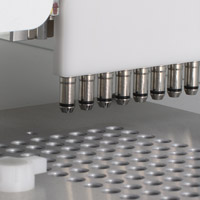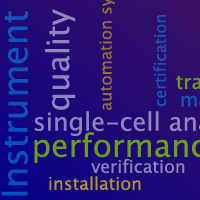As researchers delve deeper into the human genome, demand for highly sensitive and reproducible RNA-seq is growing. Next-generation sequencing (NGS) applications offer diverse and detailed analysis for these studies, but manual library preparation is repetitive, tedious, and prone to human error and variability. In contrast to manual preparation methods, the Apollo system brings the benefits of high-throughput automation to the equation. By combining the industry-leading sensitivity of SMART-Seq v4 (SSv4) ultra-low-input cDNA synthesis with the consistency of the Apollo instrument, we developed an automated workflow for ultra-low-input and single-cell RNA-seq, yielding comparable, if not better, results for cDNA synthesis versus manual protocols, while also decreasing hands-on time and variability.
Tech Note
Automating sensitive SMART-Seq v4 chemistry for reliable, high-throughput results on the Apollo system
Introduction
Results
To analyze the use of SSv4 chemistry on the automated system, cDNA amplification for library preparation was performed on three different Apollo instruments with 48 samples per run (40 with Control Total RNA and eight no-RNA controls). For each run, four bench controls (three with Control Total RNA and one no-RNA control) were performed manually using the same master mixes and sharing the same thermal cycler as the automated samples.
Similar profiles and yields for automated and manual cDNA amplification
Amplified cDNA was analyzed with an Agilent 2100 Bioanalyzer and Agilent's High Sensitivity DNA Kit (Figure 1). Results showed similar amplified cDNA profiles between automated replicates, demonstrating consistency between runs. These automated replicates also showed similar profiles when compared to the manually generated cDNA, indicating that the SSv4 technology performs just as well under these time-saving, high-throughput conditions as it does with manual benchtop workflows.

Figure 1. Bioanalyzer profiles for amplified cDNA between automated and manual protocols. Amplified cDNA profiles demonstrate consistency between automated replicates and between automated and manual workflows.
The yield was calculated for the region from 300–9,000 bp and then averaged across the three Apollo runs, with 40 samples each. The three sets of manual controls with three samples each were subjected to the same calculations. Overall yield was not significantly different between the two amplification methods (Table 1).
| Workflow | Number of samples | Average yield (ng) | |
|---|---|---|---|
| Overall | Manual | 9 | 5.8 |
| Apollo | 120 | 5.0 |
Table 1. Bioanalyzer quantification of automated replicates compared to manual samples.
Sequencing libraries generated using automated and manual amplification protocols show similar metrics and high correlations
A subset of the cDNAs amplified above (33 Apollo-generated samples and nine manually generated samples) were used in a manual Nextera® XT protocol for library preparation. The resulting libraries were sequenced on a NextSeq® instrument with 75-bp paired-end reads. Reads were trimmed and mapped to rRNA and the mitochondrial genome. Remaining unmapped reads were mapped to the mouse genome, producing uniquely mapped reads and percentage of reads that mapped to RefSeq annotations, including exons, introns, and intergenic regions. The number of transcripts identified in each library was determined by the number of transcripts with an FPKM ≥0.1 or FPKM ≥1. Sequencing metrics from each of these runs show similar results for libraries generated from cDNA amplified by either workflow (Table 2).
| Workflow | Number of samples | % rRNA | Number of transcripts (FPKM > 0.1) |
Number of transcripts (FPKM > 1) |
Range of Pearson correlations | |
|---|---|---|---|---|---|---|
| Overall | Manual | 9 | 0.9 | 11,609 | 10,201 | 0.94–0.97 |
| Apollo | 33 | 1.7 | 12,454 | 10,746 | 0.91–1.0 |
Table 2. Similar sequencing metrics between libraries generated from cDNA amplified by automated and manual protocols. FPKM = fragments per kb mapped.
Libraries generated from both types of samples showed high correlation between those from the manual workflow and those from the Apollo instrument (Figure 2), indicating that scaling up to a high-throughput protocol does not affect the capabilities of the SMART-Seq chemistry.

Figure 2. High correlation between libraries generated from manual and automated cDNA amplification samples. Data for each workflow represents an average of at least three technical replicates. Expression measurements are reported as FPKM.
Conclusion
Automation of our sensitive SMART-Seq v4 technology for library preparation for ultra-low-input or single-cell RNA-seq on the Apollo system provides researchers with a walkaway solution to high-throughput cDNA synthesis and downstream NGS applications. This high-throughput system displays consistency between automated replicates and provides results that show a high similarity with those of manually generated libraries, without the tedious manual processing. Learn more about the Apollo system and how it increases reproducibility while minimizing sample loss by reading our in-tip bead separation tech note.
Methods
Automated cDNA amplification was performed on three Apollo instruments with 48 samples in each run (40 with 10 pg of Control Total RNA as input, eight negative controls with no RNA input). For each of the three runs, four bench controls were performed manually, using the same master mixes as were made for the automated runs, and also sharing the same thermal cycler. The bench controls included three reactions with 10 pg of Control Total RNA as input and one negative control with no RNA input. cDNA amplification was performed according to the protocol in the SMART-Seq v4 Ultra Low Input RNA Kit for Sequencing User Manual, using 17 PCR cycles.
1 µl of amplified cDNA was analyzed with an Agilent 2100 Bioanalzyer and a High Sensitivity DNA Kit (Agilent, Cat. # 5067-4326). The peak was manually integrated using the Bioanalyzer for the region from 300–9,000 bp to calculate the concentration. To calculate the total cDNA output, the concentration (as defined by the Bioanalyzer software) was multiplied by 17 µl. Averages were calculated across three Apollo runs with 40 samples each, and three sets of manual controls with three samples each.
100 pg of amplified cDNA was used in a manual Nextera XT protocol. The resulting sequencing libraries were sequenced on a NextSeq instrument with paired-end 75-bp reads. Analysis was performed with CLC Bio v9.5.3. Reads were trimmed and mapped to rRNA and the mitochondrial genome. Unmapped reads were then mapped to the mouse genome (mm9), producing uniquely mapped reads and percent reads that mapped to RefSeq annotations, including exons, introns, and intergenic regions. The number of transcripts identified in each library was determined by the number of transcripts with an FPKM ≥0.1 or FPKM ≥1. Expression levels of different genes were obtained using CLC Genomics Workbench after mapping to RefSeq. Transcript expression levels were exported from CLC, and correlations between individual samples (data not shown) or groups of samples (data shown in Figure 2) were obtained using Excel.
Related Products
Apollo instrument
Automated, high-throughput NGS library preparation from DNA, RNA, or ChIP DNA.
Apollo reagents
Chemistries and protocols for DNA-seq, RNA-seq, and ChIP-seq NGS library prep.
SMART-Seq v4 for Apollo
Automated SMART-Seq v4 workflow performs like your manual workflow—but faster.
Apollo consumables
Reservoirs, tips, tubes, caps, plates, and other plastics for automated NGS library prep.
Technology overview
Get unrivaled results with simplified, automated NGS library preparation.
In-tip bead separation
Apollo system's unique library cleanup enables reliable NGS library prep.
Apollo citations
See how scientists around the world use the Apollo system.
Technical specifications
Detailed technical specifications of the Apollo instrument.
Apollo services
Available service options for the Apollo system.
Takara Bio USA, Inc.
United States/Canada: +1.800.662.2566 • Asia Pacific: +1.650.919.7300 • Europe: +33.(0)1.3904.6880 • Japan: +81.(0)77.565.6999
FOR RESEARCH USE ONLY. NOT FOR USE IN DIAGNOSTIC PROCEDURES. © 2025 Takara Bio Inc. All Rights Reserved. All trademarks are the property of Takara Bio Inc. or its affiliate(s) in the U.S. and/or other countries or their respective owners. Certain trademarks may not be registered in all jurisdictions. Additional product, intellectual property, and restricted use information is available at takarabio.com.



